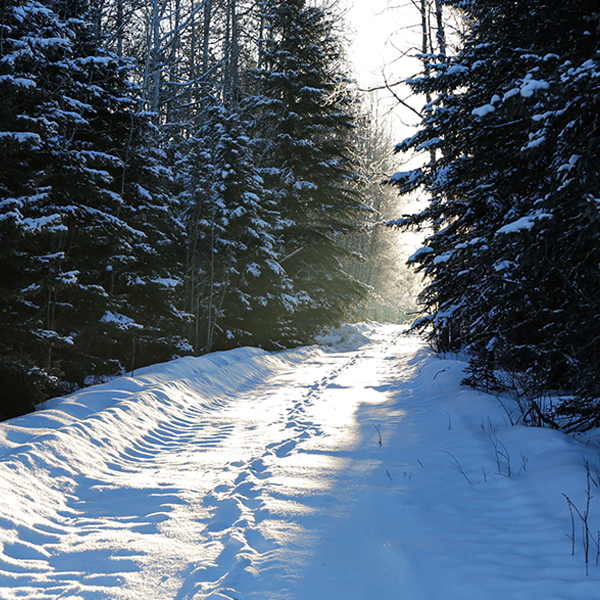
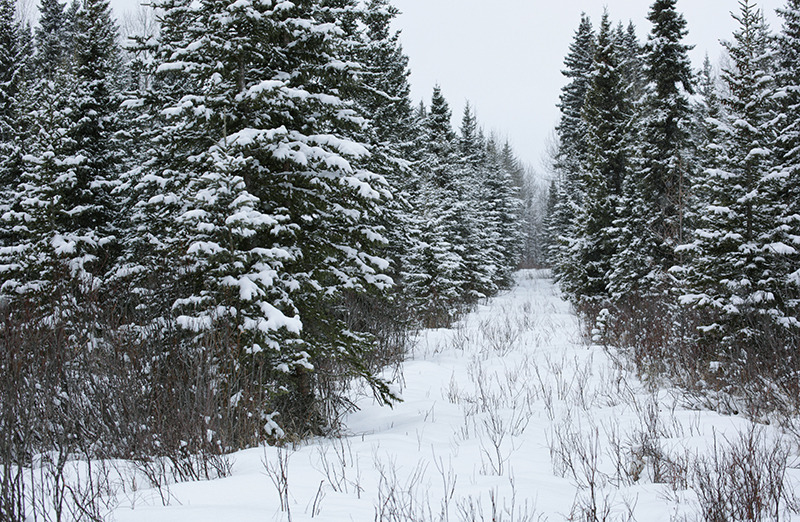 Most years, I’d rather let my birthday go unnoticed, and thankfully, I married someone who feels the same way about hers. If someone mentioned having a birthday ‘party’ for me, my first thought would be, “What the hell did I ever do to you?”
Most years, I’d rather let my birthday go unnoticed, and thankfully, I married someone who feels the same way about hers. If someone mentioned having a birthday ‘party’ for me, my first thought would be, “What the hell did I ever do to you?”
Given my nature, it’s no mystery why birthdays make me melancholy. Another year older with not enough accomplished. Dwelling on past mistakes or missed opportunities is an unhealthy perspective and does nothing good for the mind or soul, but we’re all human. We feel what we feel.
This side of 50, I no longer tolerate cheap-seat criticism for who I am, especially from those who wouldn’t take it from me. I’ve heard this sentiment called the Fuck-It Fifties, and I have embraced that. A wise philosopher once said, “I yam what I yam and dats all that I yam.”
As my 53rd birthday approached, I still felt low after a long, dark winter. Rather than stay home, brood and make Shonna’s weekend miserable, I decided to get away by myself. She had no objection.
While friends and I have rented a cabin a few times a year in the Central Alberta foothills, I associate that place with social gatherings, games, music, late nights, and sharing spirits of the bottled variety.
 But on the northern border of that same property, nestled beside secluded wetlands, there is another cabin. It’s one room, one bed, solar power for lights, an outhouse, no water and no noise. It’s at the end of a road, behind a gate on private property.
But on the northern border of that same property, nestled beside secluded wetlands, there is another cabin. It’s one room, one bed, solar power for lights, an outhouse, no water and no noise. It’s at the end of a road, behind a gate on private property.
Cooking is outside on a propane stove and tabletop BBQ. The only heat is from a wood stove and you bring your own bedding. Were it not for the comfort and unique personality of the place, it’s a stone’s throw from camping.
I brought my camera, guitar, books, writing and drawing tools and told myself I’d be open to what happens, intending to let go and relax. It took very little time, however, to realize that I had also brought myself on this getaway, and that’s not how I roll.
The usual 2.5-hour drive from Canmore took longer because of a spring snow event. Had I seen a video of the white-knuckle experience I was in for, I would have stayed home. But once I arrived and pried my fingers from the steering wheel, I was glad to be there.
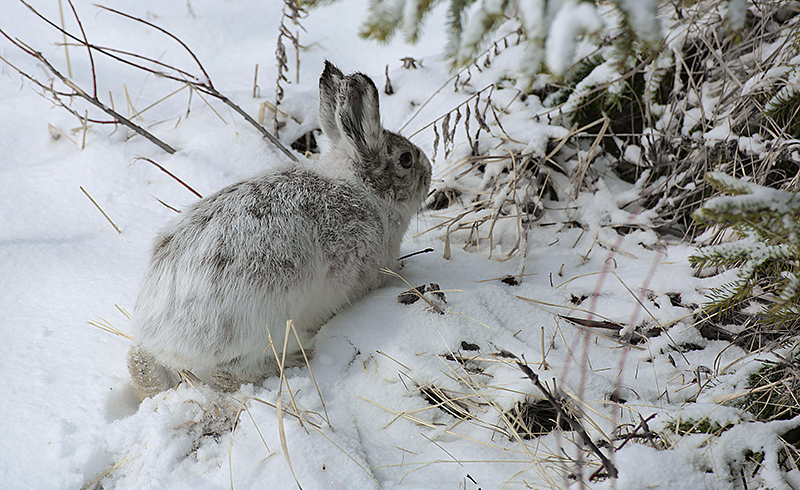 While shovelling snow, I scared a snowshoe hare out from under the deck, and I took that as a good sign. I wanted to see wildlife, even though this critter did not want to see me.
While shovelling snow, I scared a snowshoe hare out from under the deck, and I took that as a good sign. I wanted to see wildlife, even though this critter did not want to see me.
After I unloaded my stuff, I sat on the couch, took a deep breath and thought, “Now what?”
At home, I prefer long days working alone, but I never have a shortage of things to do to occupy my time and mind. We all have nasty demons that remind us of our failures, regrets, and shortcomings. When you find yourself alone with nothing to distract you, their voices become louder. As the man said, “Wherever you go, there you are.”
 The property owners have become friends over the years, and I like to visit them. While on my daily wanders, I walked up to their place a couple of times, a 5-6 km round trip from where I was staying, as I had no interest in taking the shortest route.
The property owners have become friends over the years, and I like to visit them. While on my daily wanders, I walked up to their place a couple of times, a 5-6 km round trip from where I was staying, as I had no interest in taking the shortest route.
I confessed Friday afternoon that I felt a little low, a confusing realization since I know and enjoy this place. Sitting in the cabin alone, looking at the beautiful view, I wondered if I had made a mistake. Karen said it often takes people at least 24 hours to get used to the solitude. She shared that one woman, another artist, booked a cabin for three nights and left after one day because she couldn’t handle being alone in the quiet.
I felt sorry for that stranger but didn’t judge her because I understood. On the walk back to the cabin, I wished she’d given herself a little more time.
By Friday evening, after dinner, I was past my own discomfort and genuinely began to relax. I sat at the small table, looking out at the falling snow, well into a book I’d wanted to read for a while. I made a big mug of tea, put more wood on the fire and that’s how I spent the rest of my evening.
For the remainder of the weekend, I played guitar, read my book, and sat quietly on the deck in the sunshine. I went to bed when I felt like it, got up early before the sun, and wandered the property with my camera.
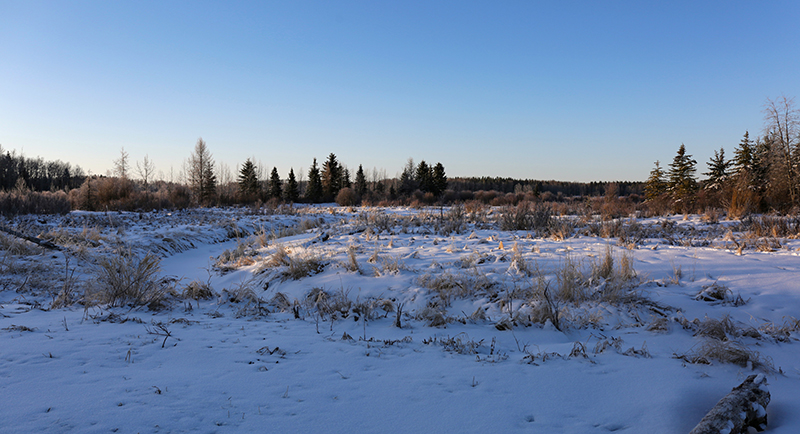 Free to roam more than 300 acres of pasture, wetlands, and forest, I walked close to 20km over 72 hours in snow and sunshine. It was peaceful and very pretty.
Free to roam more than 300 acres of pasture, wetlands, and forest, I walked close to 20km over 72 hours in snow and sunshine. It was peaceful and very pretty.
People see moose here, walking right by the cabin. I saw one in the distance years ago. On previous visits, I’ve seen owls, deer, and coyotes several times. Even though I know that wildlife doesn’t punch a clock, I hoped for an encounter or two.
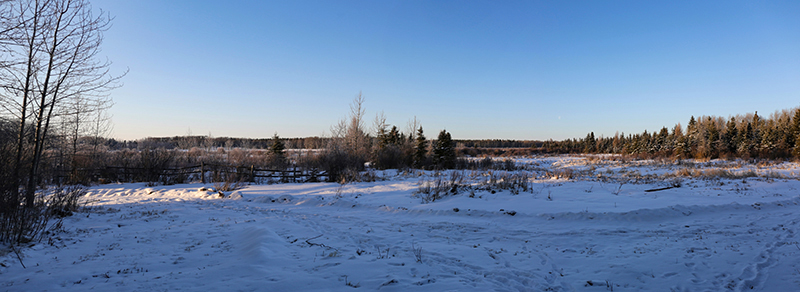 In the new fallen snow, fresh moose, coyote, deer and rabbit tracks were all over the place, many of them just hours old. I heard the coyotes at night and in the morning, and that was nice. It’s one of my favourite sounds. I listened to an owl calling two nights in a row. But all I saw were little birds flying here and there, a few ravens, a couple of geese, and that scared little bunny when I first arrived.
In the new fallen snow, fresh moose, coyote, deer and rabbit tracks were all over the place, many of them just hours old. I heard the coyotes at night and in the morning, and that was nice. It’s one of my favourite sounds. I listened to an owl calling two nights in a row. But all I saw were little birds flying here and there, a few ravens, a couple of geese, and that scared little bunny when I first arrived.
I didn’t even see a squirrel.
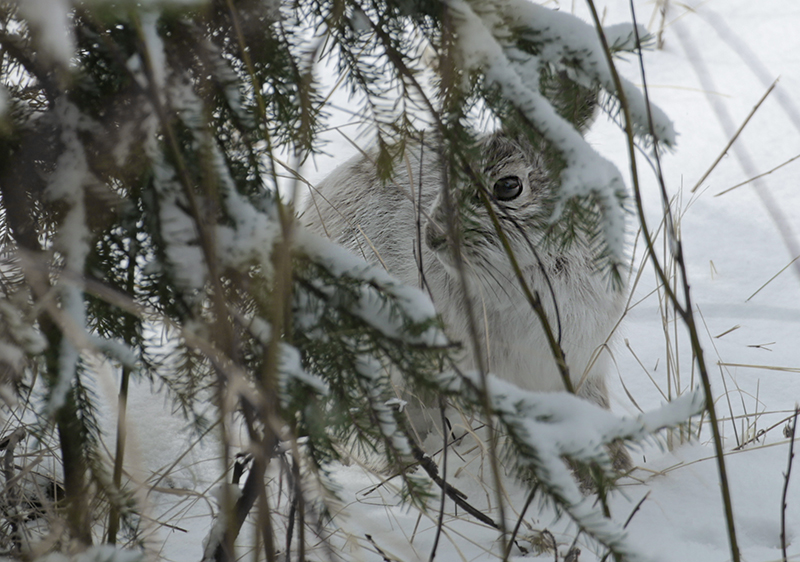 I know professional photographers who spend great amounts of time, energy and money to get to remote places, park themselves in a blind, right next to a game trail for hours and days on end, and often come home with little or nothing to show for it.
I know professional photographers who spend great amounts of time, energy and money to get to remote places, park themselves in a blind, right next to a game trail for hours and days on end, and often come home with little or nothing to show for it.
But I’ll confess to feeling a little insulted. When you paint personality in whimsical wildlife, you end up with a warped sense of expectation regarding actual wildlife. Come on, I thought we were friends, here.
Upon reflection, had I seen and photographed cooperative critters, I would have undoubtedly spent hours going through them on my iPad. I would have made some edits, considered possible paintings, and wrote something about the experience, and I would have edited that, too. Suddenly, I’d be working.
So, perhaps I got what I needed, instead of what I wanted.
On the perfect sunny drive home on dry roads with light traffic, I had time to reflect and was content with the experience. 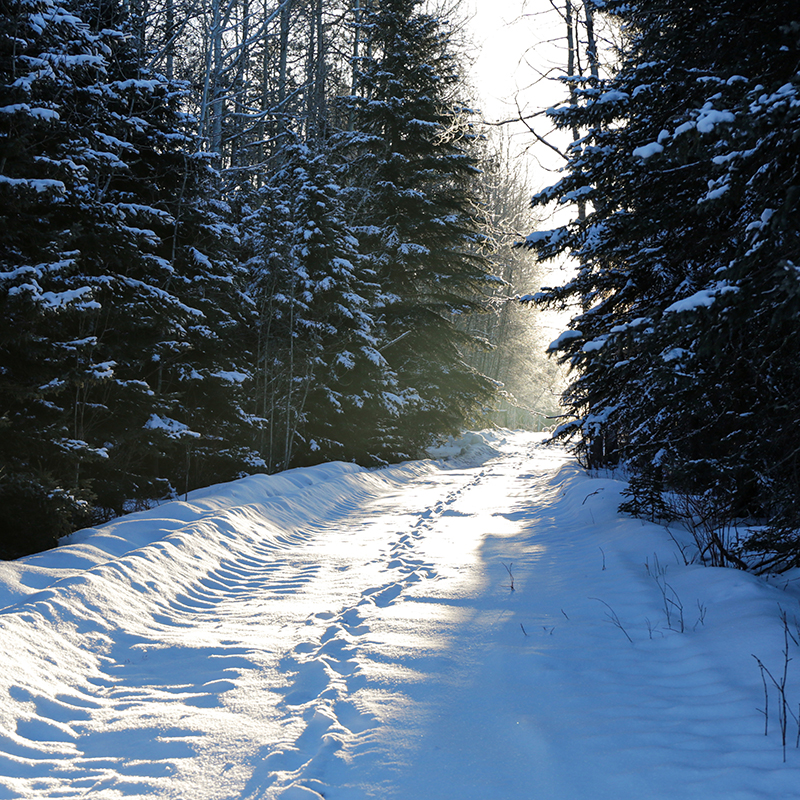 I spent my birthday by myself, without anyone telling me how I should be celebrating it. I got up early, as I prefer, without walking on eggshells for fear of waking anybody up, which is often the case on cabin visits with friends. I played guitar and sang, fumbled with chord changes, learning songs I didn’t know, without intruding on anyone else’s peace and quiet.
I spent my birthday by myself, without anyone telling me how I should be celebrating it. I got up early, as I prefer, without walking on eggshells for fear of waking anybody up, which is often the case on cabin visits with friends. I played guitar and sang, fumbled with chord changes, learning songs I didn’t know, without intruding on anyone else’s peace and quiet.
I asked no permission, made no apologies, and had no schedule or agenda. And though it took me a day to settle into it, I now wish I could have stayed longer.
Maybe next time.
Cheers,
Patrick



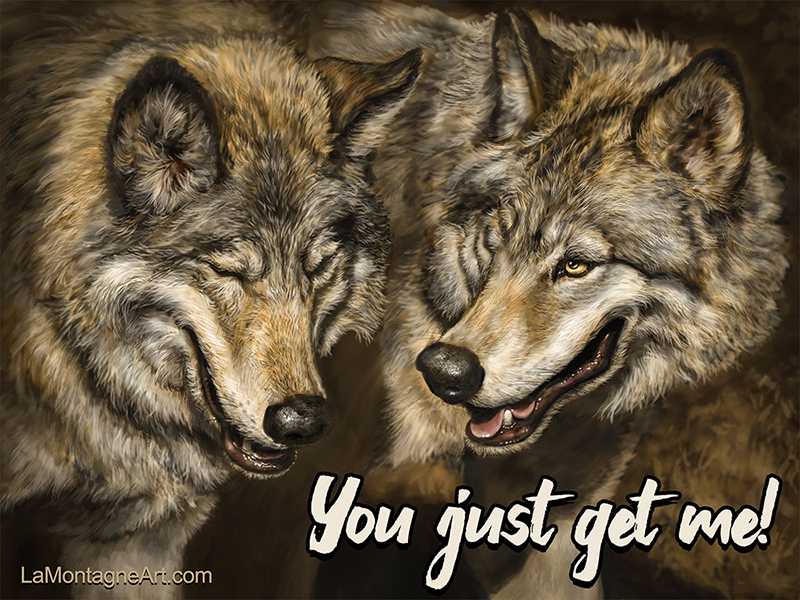 If you’re like me, bombarded daily with negative news and polarized opinions, this noisy world can become overwhelming. It bothers me, and I often wonder, “Why are people so mean to each other?”
If you’re like me, bombarded daily with negative news and polarized opinions, this noisy world can become overwhelming. It bothers me, and I often wonder, “Why are people so mean to each other?”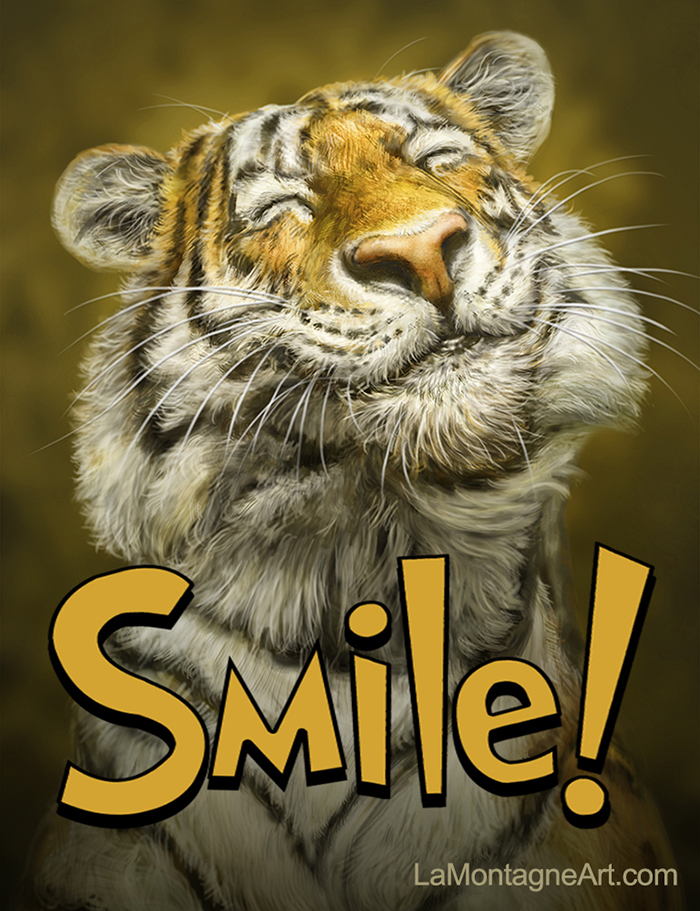 It’s a moment of connection between my funny-looking animals and people I’ve never met. I love watching it happen, and it is a reminder that something I created made somebody else’s day a little better, if only for a moment. In a world that often seems nasty, with people intent on highlighting our worst qualities, I create art that makes people smile. I often forget that, but when I do remember, I’m grateful for this ability.
It’s a moment of connection between my funny-looking animals and people I’ve never met. I love watching it happen, and it is a reminder that something I created made somebody else’s day a little better, if only for a moment. In a world that often seems nasty, with people intent on highlighting our worst qualities, I create art that makes people smile. I often forget that, but when I do remember, I’m grateful for this ability.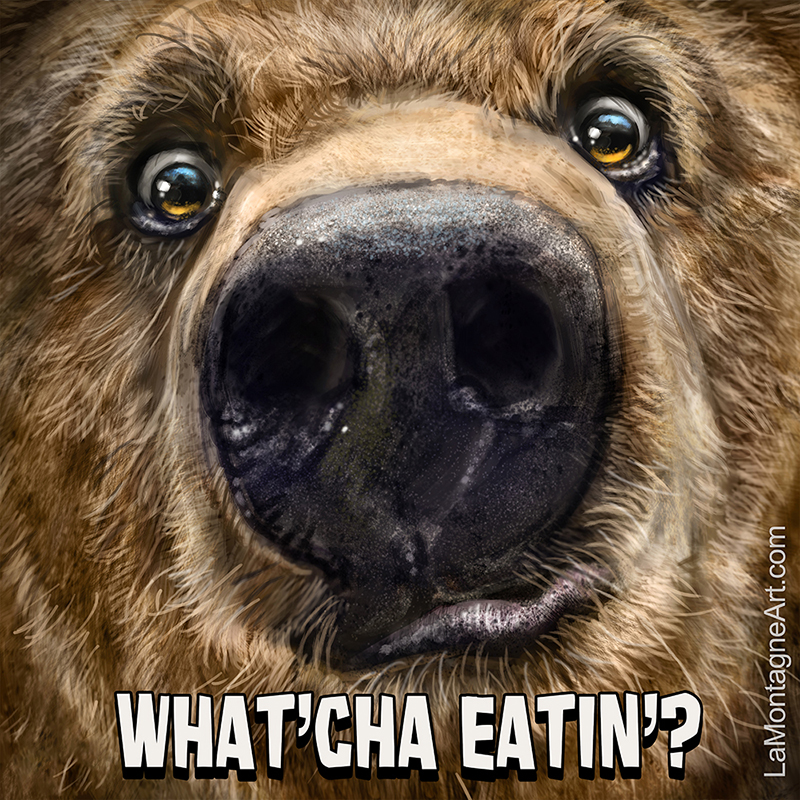 If you know me well, all this might sound hypocritical. I struggle with seeing the good in the world, which often puts me in a dark mood. But just like a smoker knows the habit is unhealthy, it’s worth the effort to try to cut back and eventually quit.
If you know me well, all this might sound hypocritical. I struggle with seeing the good in the world, which often puts me in a dark mood. But just like a smoker knows the habit is unhealthy, it’s worth the effort to try to cut back and eventually quit.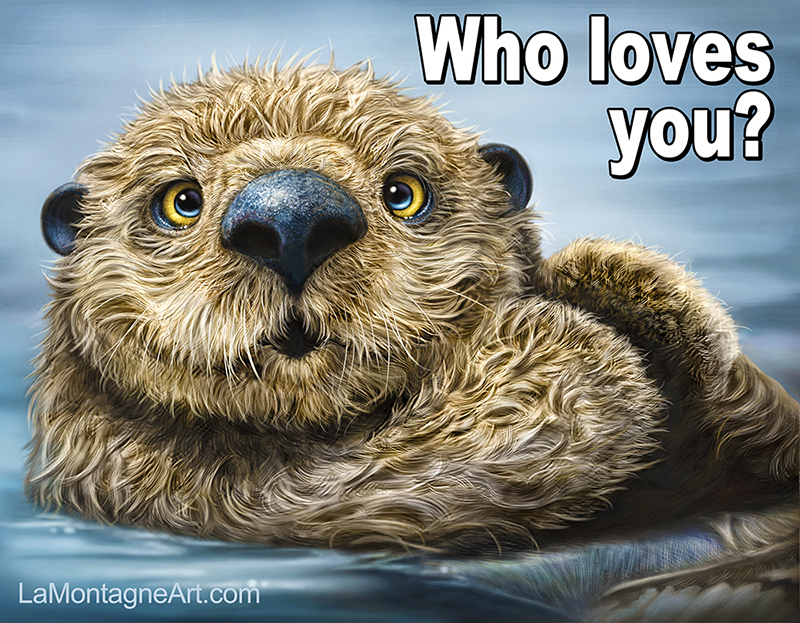 So, to spread some positive feelings around, I created these Wilder Wishes images you see here, from some of
So, to spread some positive feelings around, I created these Wilder Wishes images you see here, from some of 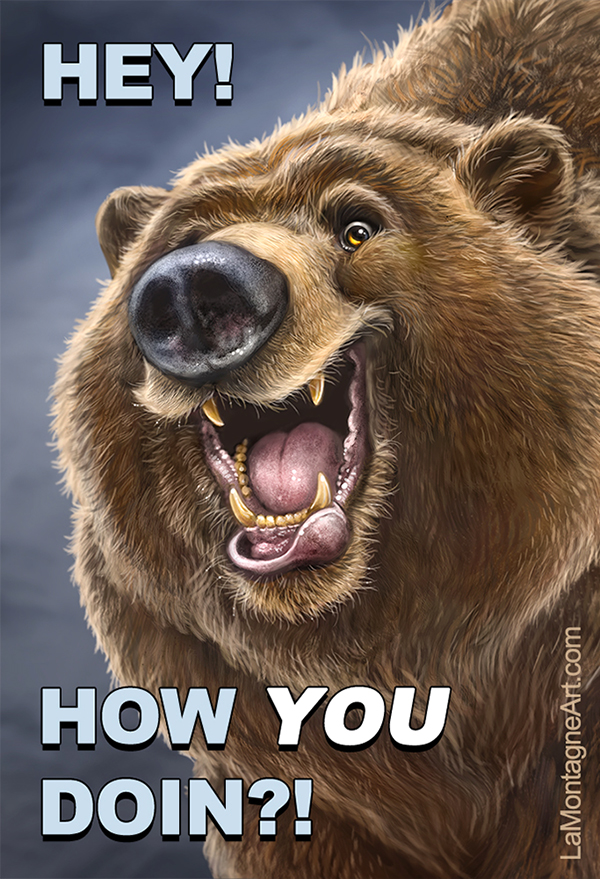 If one of these happy faces makes the day a little brighter, for you or somebody else, then that makes mine better, too. Sometimes, you’ve got to give a smile to get one back.
If one of these happy faces makes the day a little brighter, for you or somebody else, then that makes mine better, too. Sometimes, you’ve got to give a smile to get one back.
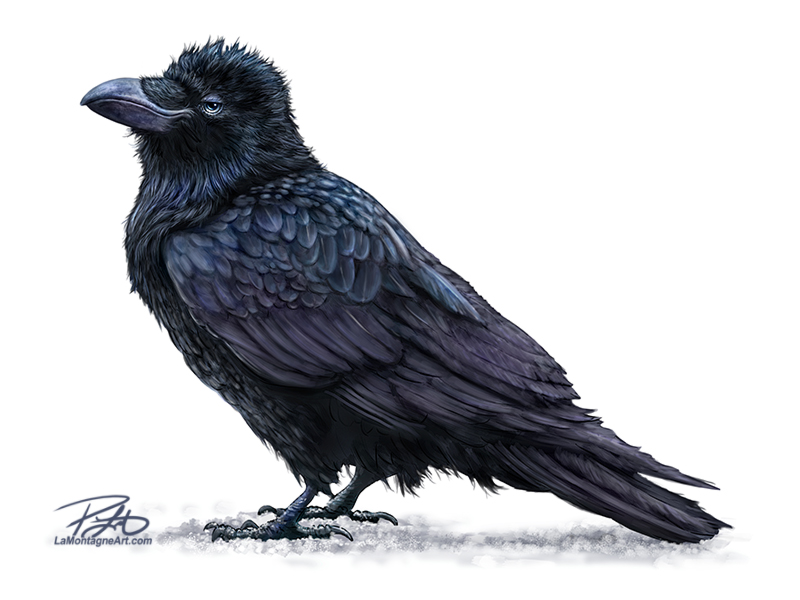 In the late nineties, I worked different jobs at a hotel in Banff for five or six years, from waterslide attendant and manager to front desk agent, night auditor and accounting clerk.
In the late nineties, I worked different jobs at a hotel in Banff for five or six years, from waterslide attendant and manager to front desk agent, night auditor and accounting clerk.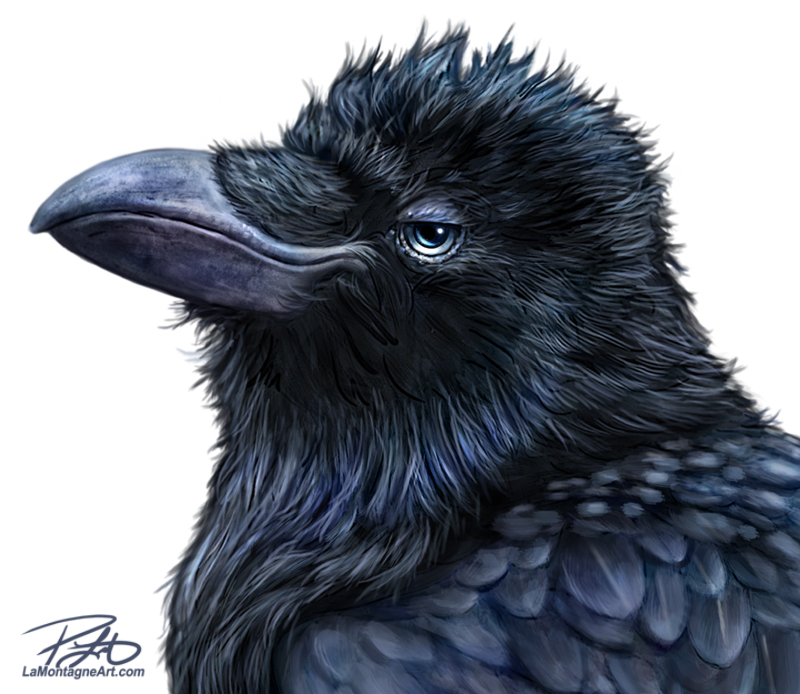 I’ve always liked ravens, and I talked a bit about that in my
I’ve always liked ravens, and I talked a bit about that in my 
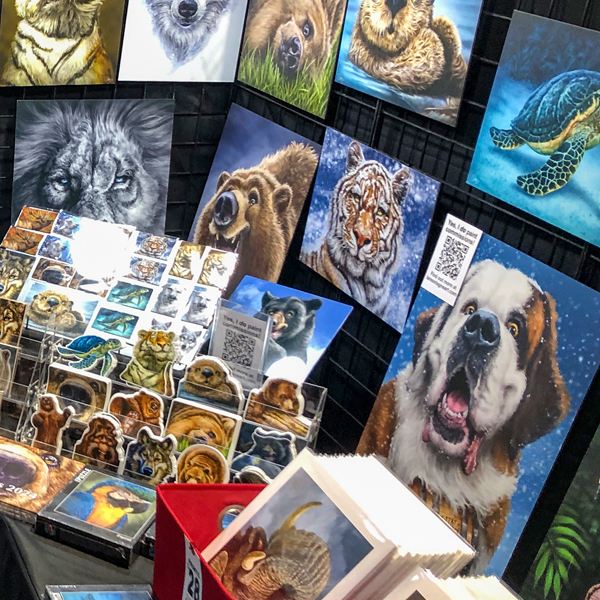

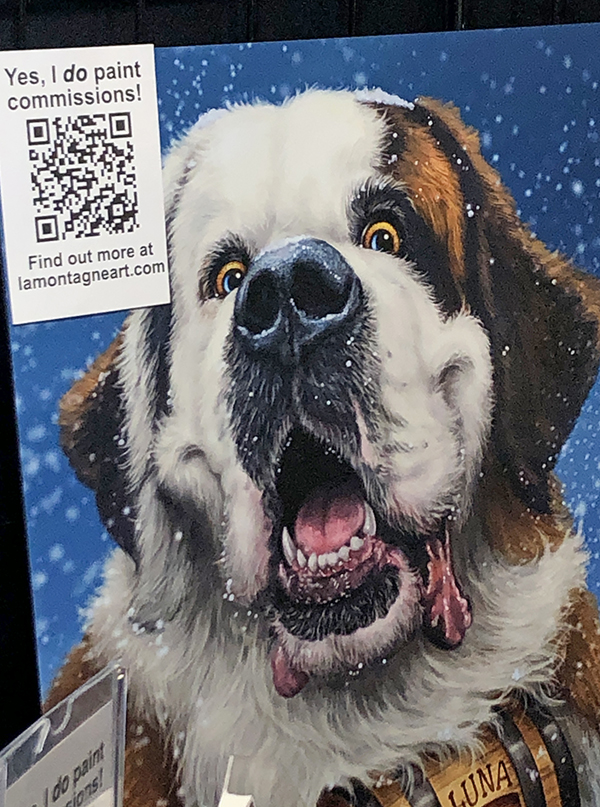
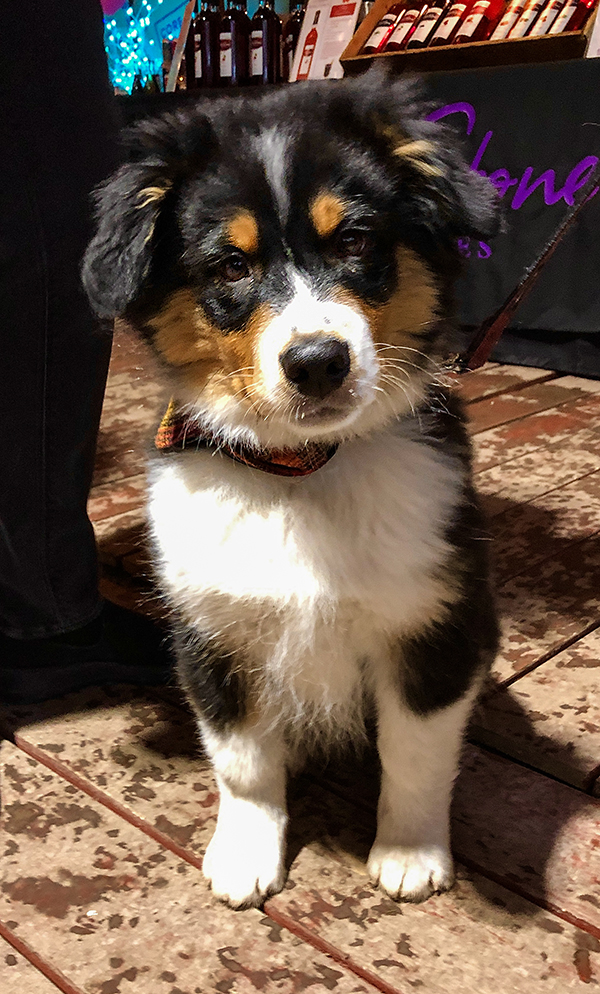

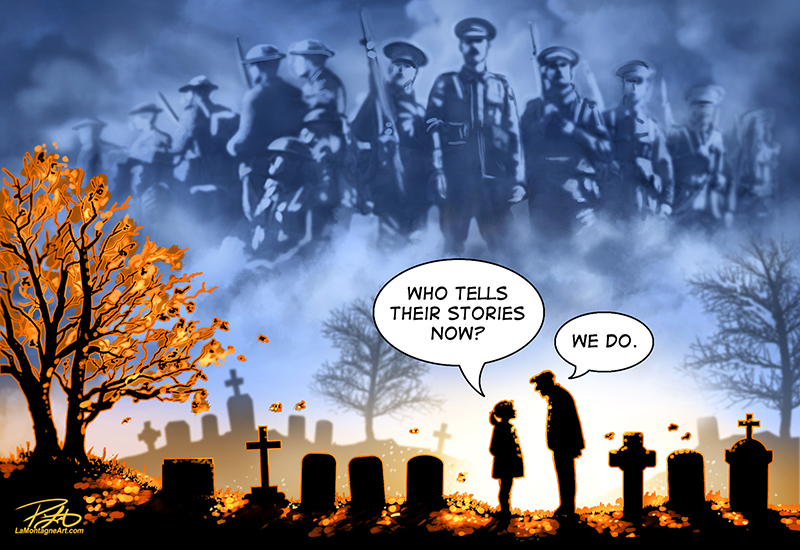
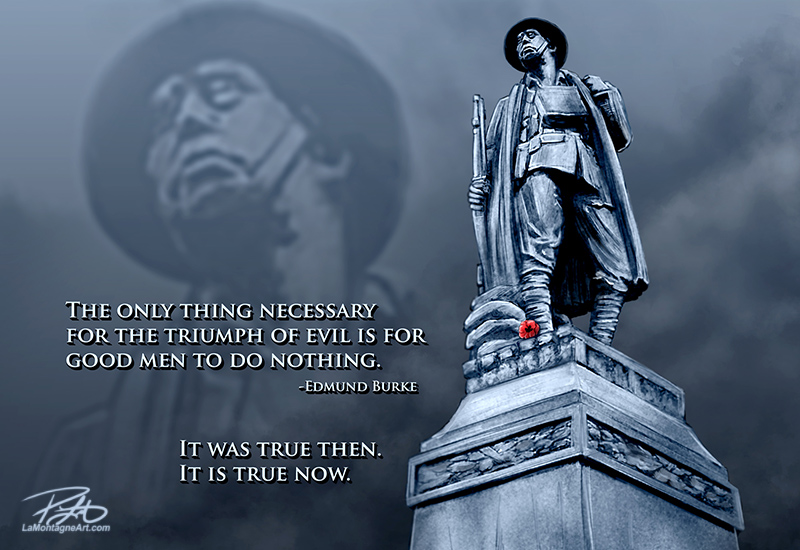 On occasion, I focus less on veterans of the wars and more on those who currently serve. And throughout the year, I take every opportunity to draw cartoons intended to shame our political leadership into less talk and more action.
On occasion, I focus less on veterans of the wars and more on those who currently serve. And throughout the year, I take every opportunity to draw cartoons intended to shame our political leadership into less talk and more action.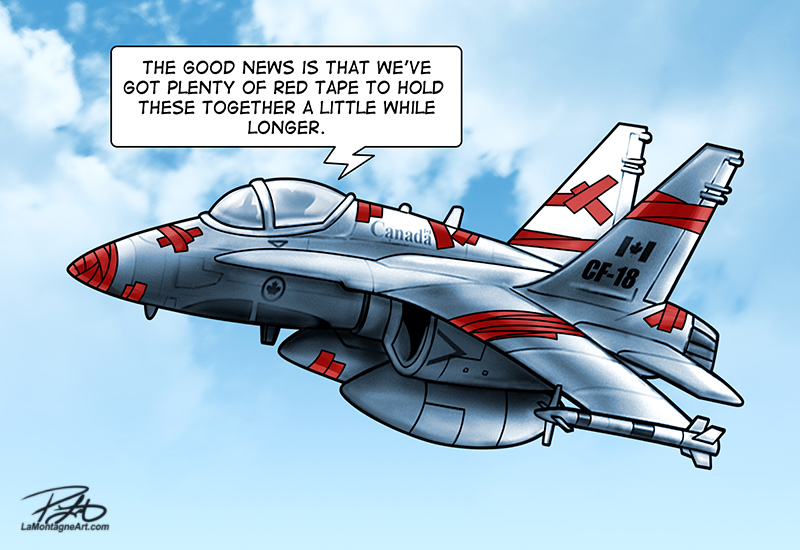 From decades-long procurement problems and endless red tape tying up much-needed equipment replacement to an enlistment shortfall that gets worse each year, the Canadian Armed Forces has its issues. Stains and scandals are public record, and for those, they’re held to account.
From decades-long procurement problems and endless red tape tying up much-needed equipment replacement to an enlistment shortfall that gets worse each year, the Canadian Armed Forces has its issues. Stains and scandals are public record, and for those, they’re held to account.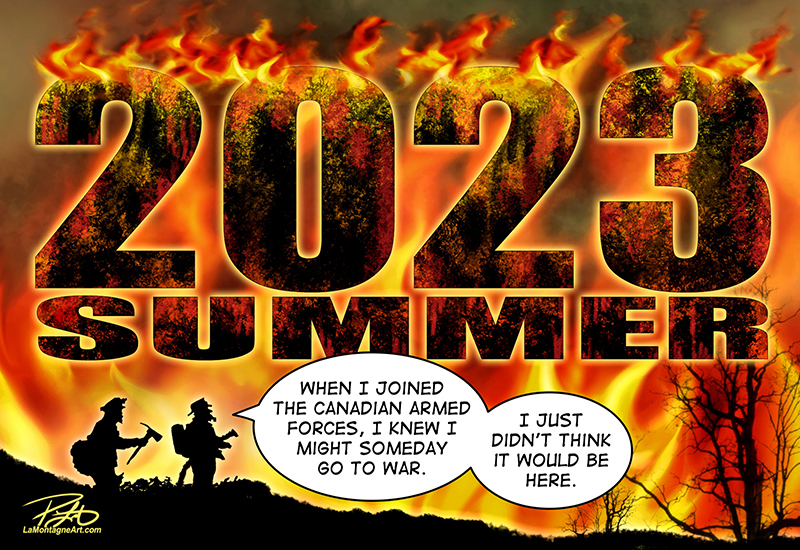 Just this year, the military was tasked with emergency deployments when wildfires threatened several communities. They’ve rendered such assistance in countless natural disasters across Canada over the years. Given our changing climate, Canada will require more of their aid in the future.
Just this year, the military was tasked with emergency deployments when wildfires threatened several communities. They’ve rendered such assistance in countless natural disasters across Canada over the years. Given our changing climate, Canada will require more of their aid in the future.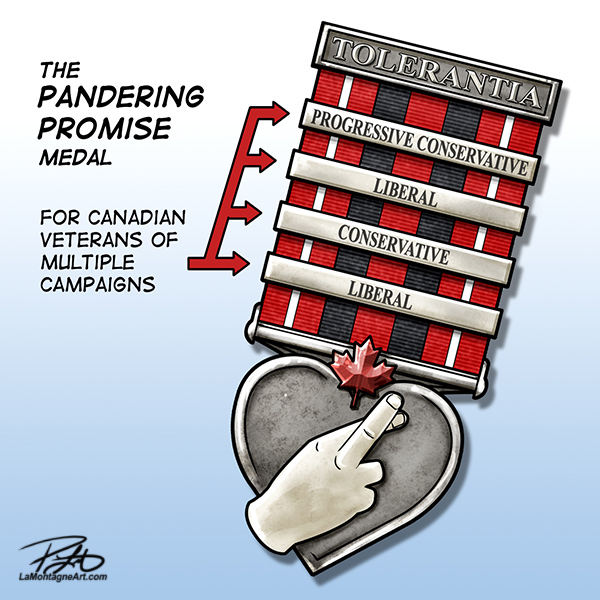 Politicians on all sides talk a good game about supporting our men and women in uniform when it buys them votes, only to slash budgets when they no longer benefit from the optics. The men and women who serve have surrendered their right to openly complain about the government, something the rest of us take for granted.
Politicians on all sides talk a good game about supporting our men and women in uniform when it buys them votes, only to slash budgets when they no longer benefit from the optics. The men and women who serve have surrendered their right to openly complain about the government, something the rest of us take for granted.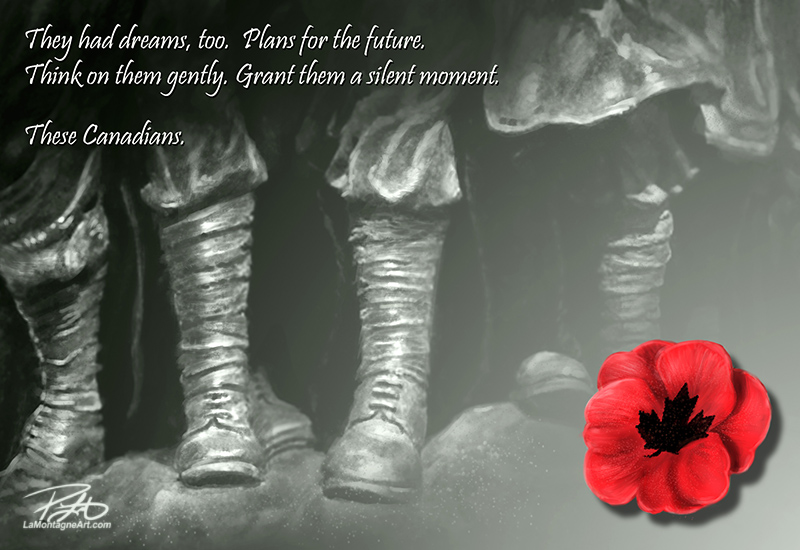 Yes, think of those who have fallen in service of our country. Remember them and their sacrifice, so that history isn’t allowed to repeat.
Yes, think of those who have fallen in service of our country. Remember them and their sacrifice, so that history isn’t allowed to repeat.
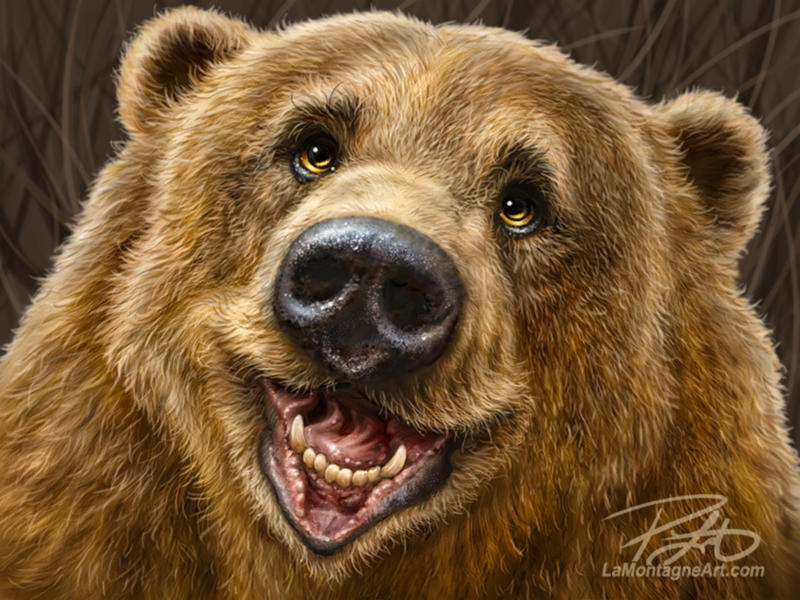 Winter reared its ugly head this week in Alberta, and I’m already feeling the blues. It happens every year, but painting a happy face usually puts me in a better mood. Grizzly Bearapy. It’s an effective prescription.
Winter reared its ugly head this week in Alberta, and I’m already feeling the blues. It happens every year, but painting a happy face usually puts me in a better mood. Grizzly Bearapy. It’s an effective prescription.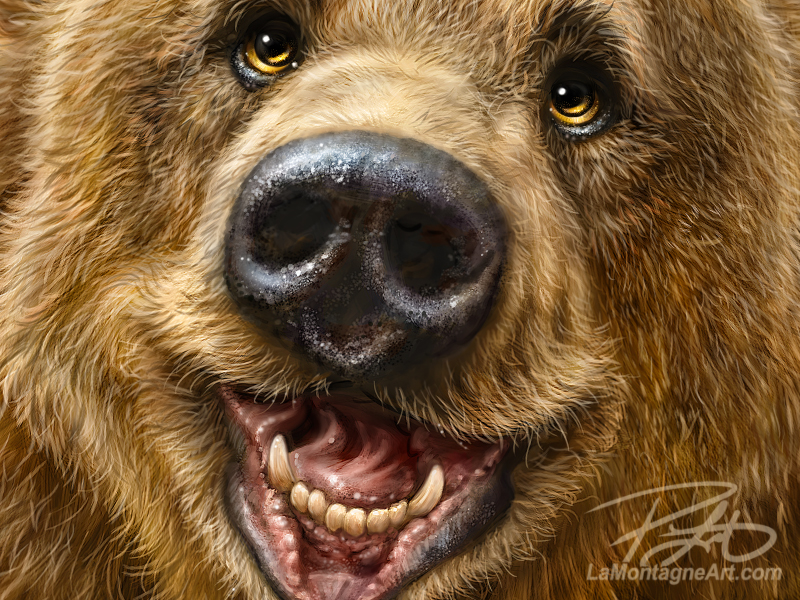 Though this painting was fun to do, as are most of my whimsical wildlife pieces, it was a commercial decision. It’s the first in a series of paintings I’m creating to promote my work to new licensing clients. It’s also another painting for the bear book.
Though this painting was fun to do, as are most of my whimsical wildlife pieces, it was a commercial decision. It’s the first in a series of paintings I’m creating to promote my work to new licensing clients. It’s also another painting for the bear book.
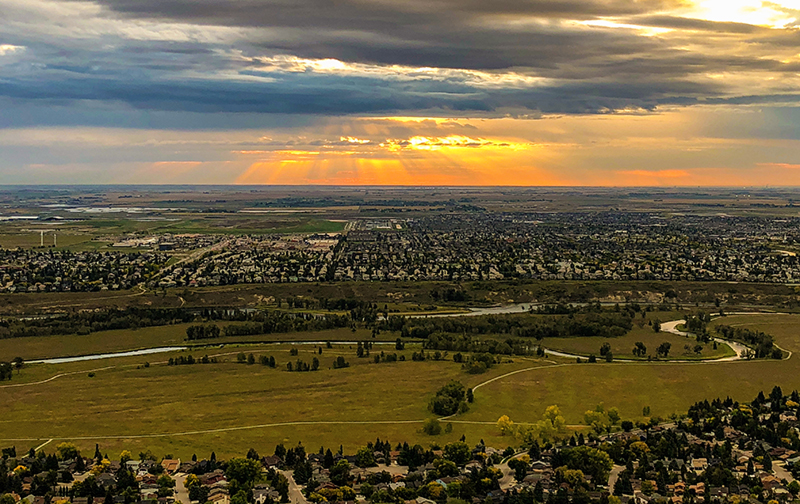 Shonna and I planned to celebrate our 25th anniversary in the latter half of 2020, right after she turned 50. Our birthdays are six months apart to the day, and my 50th was the following spring.
Shonna and I planned to celebrate our 25th anniversary in the latter half of 2020, right after she turned 50. Our birthdays are six months apart to the day, and my 50th was the following spring.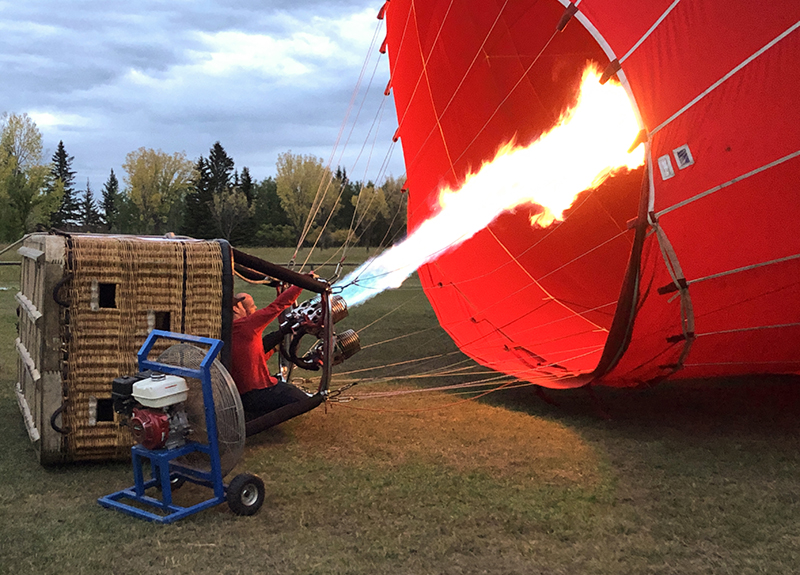 Our balloon could hold thirteen people, but we had plenty of room with only five guests, our pilot and two crew. The basket was spacious, with different compartments, plenty of padding and handholds.
Our balloon could hold thirteen people, but we had plenty of room with only five guests, our pilot and two crew. The basket was spacious, with different compartments, plenty of padding and handholds.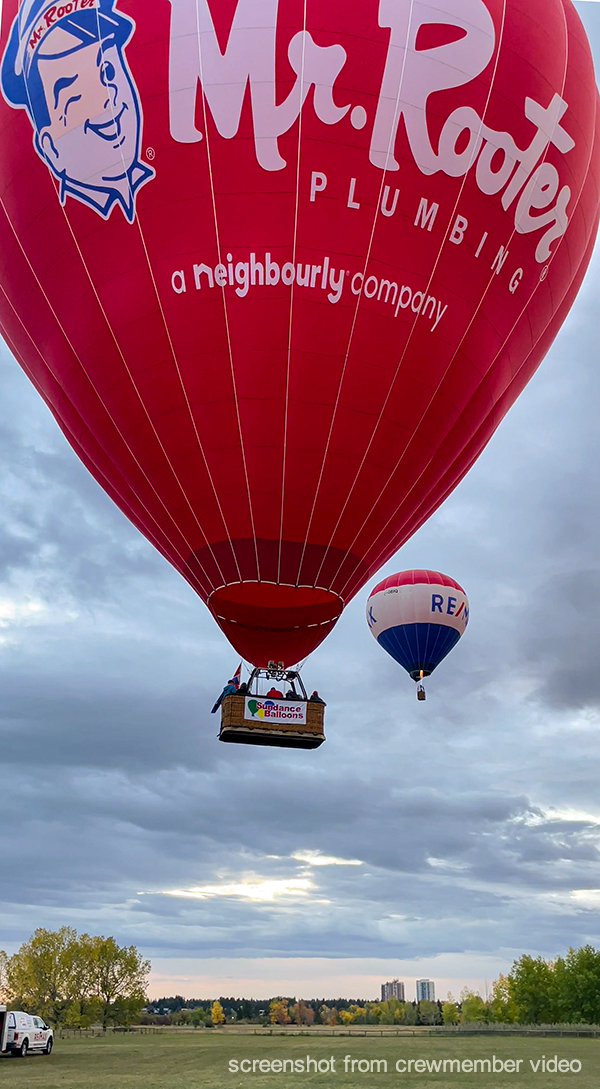
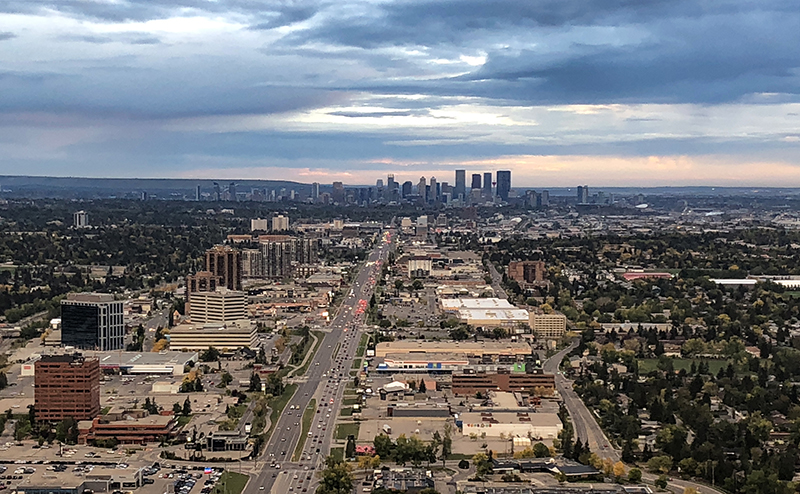 With almost an hour of flight time, we went from flying high in the air, enjoying panoramic views on all sides with a fantastic sunrise to hovering motionless ten feet off the ground in Fish Creek Park.
With almost an hour of flight time, we went from flying high in the air, enjoying panoramic views on all sides with a fantastic sunrise to hovering motionless ten feet off the ground in Fish Creek Park.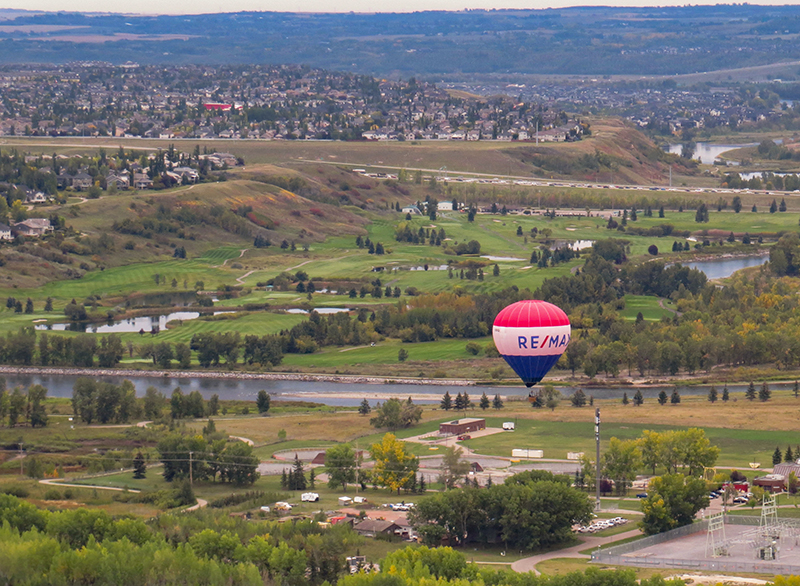
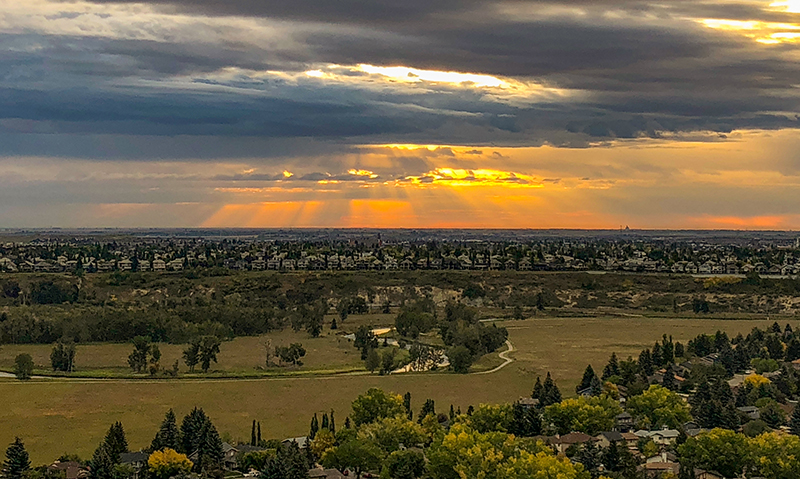
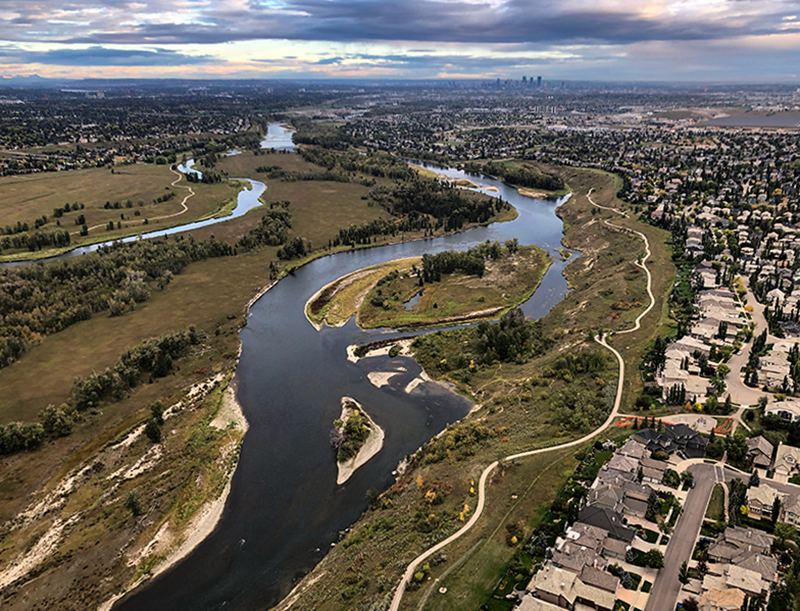 While the higher altitude flying was a thrill, I most enjoyed lazily floating over suburban neighbourhoods at treetop height as people went to school and work. Several times, folks stood in their driveways and backyards, waving and calling out ‘Good Morning,’ so close we barely had to raise our voices. While stopped at intersections on their morning commutes, people honked and waved out the open windows of their cars. A couple of times, kids hurried out of the way, thinking we were about to land on them.
While the higher altitude flying was a thrill, I most enjoyed lazily floating over suburban neighbourhoods at treetop height as people went to school and work. Several times, folks stood in their driveways and backyards, waving and calling out ‘Good Morning,’ so close we barely had to raise our voices. While stopped at intersections on their morning commutes, people honked and waved out the open windows of their cars. A couple of times, kids hurried out of the way, thinking we were about to land on them.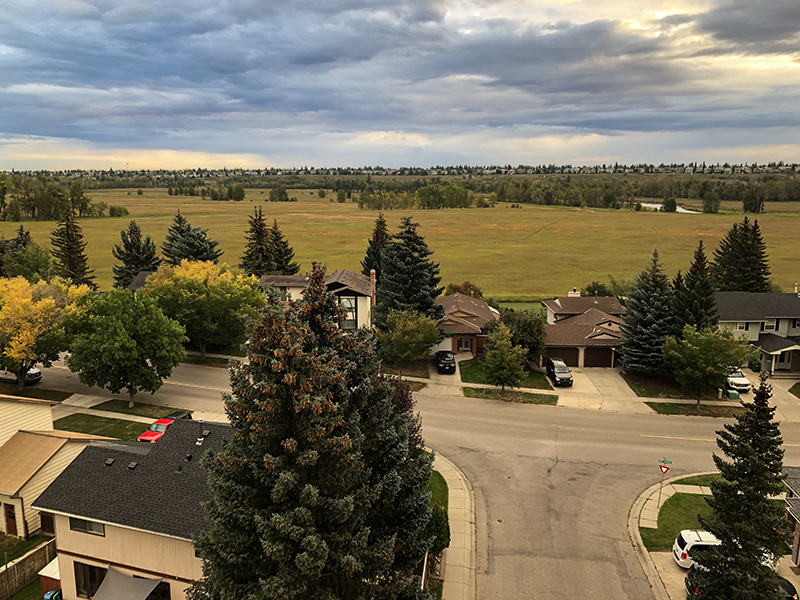 You never know your exact landing spot, and the pilot has dozens of options on the route and plenty of experience. Apparently, parks and school activity fields are ideal, and our pilot explained that the City of Calgary is supportive, flexible and accommodating.
You never know your exact landing spot, and the pilot has dozens of options on the route and plenty of experience. Apparently, parks and school activity fields are ideal, and our pilot explained that the City of Calgary is supportive, flexible and accommodating.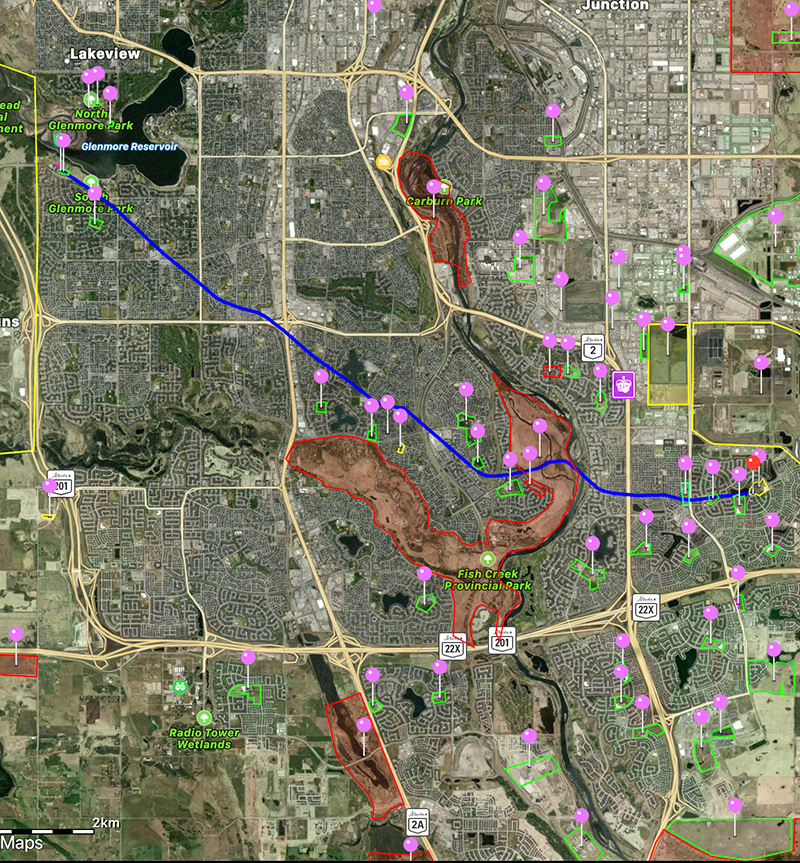 Our route is indicated by the blue line from top left to middle right. Each of the purple pins along this pilot’s navigation display are potential landing zones. Mitch explained that he could select more detail for each to see the associated features, obstacles and hazards. There truly is an app for everything.
Our route is indicated by the blue line from top left to middle right. Each of the purple pins along this pilot’s navigation display are potential landing zones. Mitch explained that he could select more detail for each to see the associated features, obstacles and hazards. There truly is an app for everything.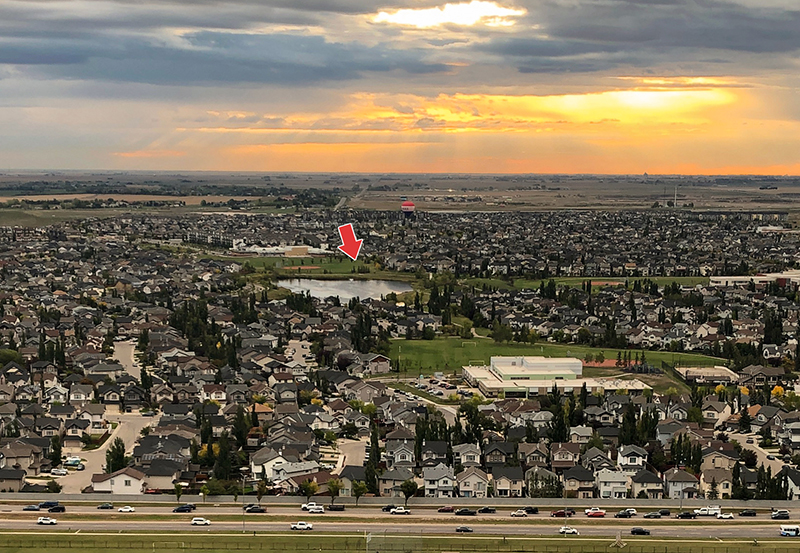 As a sudden bit of wind showed up at the last minute, we overshot the first landing site and ended up in a large green space surrounded by houses, condos and an elementary school where the students were just about to go inside to start their day. Excited by this spectacle, many of them came over to watch. The red arrow indicates where we landed.
As a sudden bit of wind showed up at the last minute, we overshot the first landing site and ended up in a large green space surrounded by houses, condos and an elementary school where the students were just about to go inside to start their day. Excited by this spectacle, many of them came over to watch. The red arrow indicates where we landed.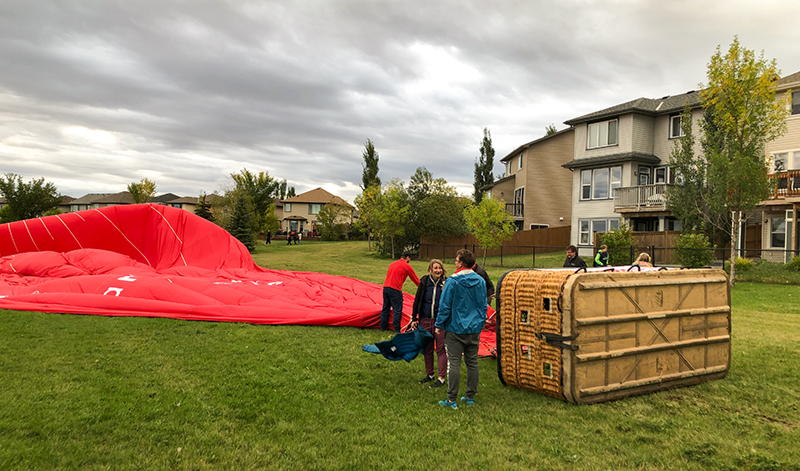 The basket bumped up and down three times before tipping over onto its side as it stopped. We’d been well briefed on landing positions, so it wasn’t even a little uncomfortable, especially with the partitioned compartments. As instructed, we waited until they secured the rig before climbing out.
The basket bumped up and down three times before tipping over onto its side as it stopped. We’d been well briefed on landing positions, so it wasn’t even a little uncomfortable, especially with the partitioned compartments. As instructed, we waited until they secured the rig before climbing out.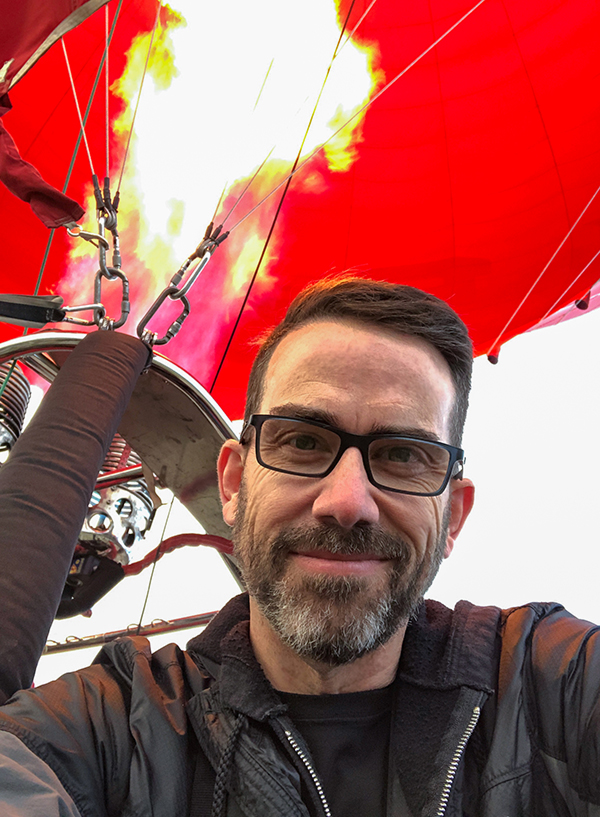

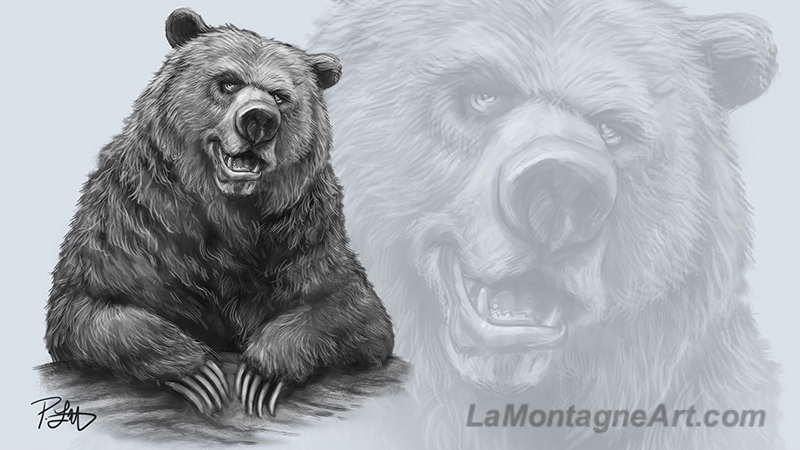 Parents used to tell their children to get an education and have something to fall back on, but those safety jobs have become rare. The days of thirty or forty years with a company followed by a healthy pension are long gone. We read daily about massive layoffs from corporations with names that used to be synonymous with stability.
Parents used to tell their children to get an education and have something to fall back on, but those safety jobs have become rare. The days of thirty or forty years with a company followed by a healthy pension are long gone. We read daily about massive layoffs from corporations with names that used to be synonymous with stability.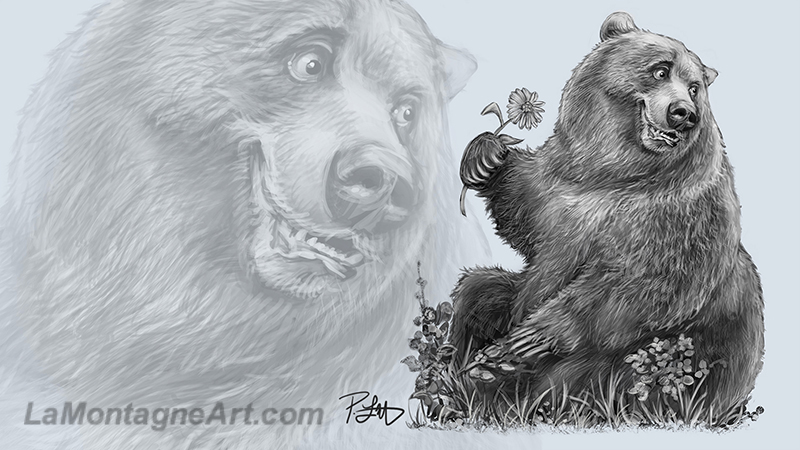 Several licensing companies rent the rights to put my work on their products. Occasionally, one will ask for a painting of a specific animal. If I can, I’ll try to accommodate the request. But without fail, as soon as I do, the client has a list of other images they want me to create.
Several licensing companies rent the rights to put my work on their products. Occasionally, one will ask for a painting of a specific animal. If I can, I’ll try to accommodate the request. But without fail, as soon as I do, the client has a list of other images they want me to create.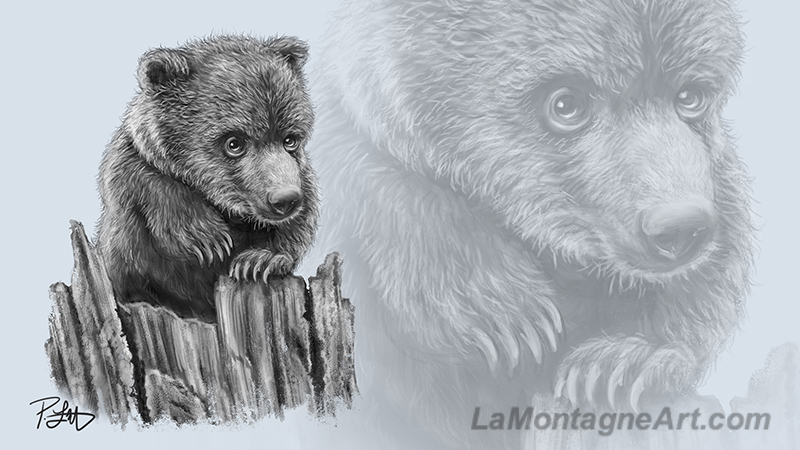 When companies are your clients, your needs are not their needs. If your art resonates with their customers, then it’s mutually beneficial. But the moment it doesn’t, you’re yesterday’s news. They’ll work with the artist who makes them the most money. They’re in business to promote their company, not your work.
When companies are your clients, your needs are not their needs. If your art resonates with their customers, then it’s mutually beneficial. But the moment it doesn’t, you’re yesterday’s news. They’ll work with the artist who makes them the most money. They’re in business to promote their company, not your work.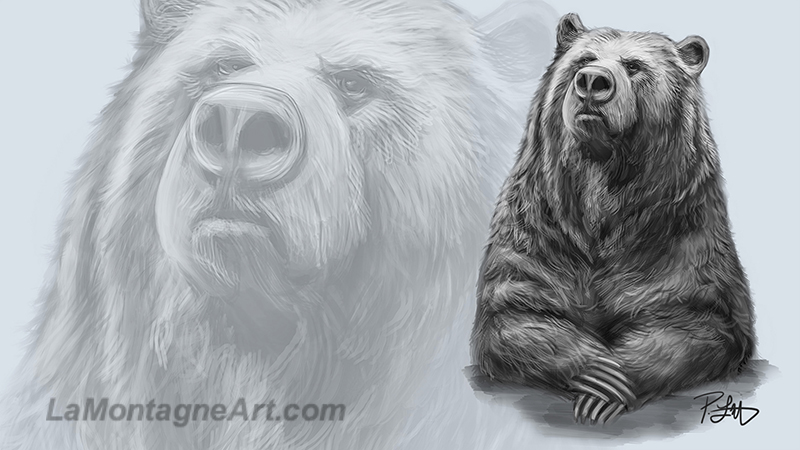 Customer service, professional behaviour and sound business practices are essential, as is compromise and accommodating your clients’ needs and wishes. People pay you to supply what they need, and delivering that often builds lasting relationships beneficial to both parties. All boats rise with the tide. Fail to realize these things, and you’ll soon be out of business.
Customer service, professional behaviour and sound business practices are essential, as is compromise and accommodating your clients’ needs and wishes. People pay you to supply what they need, and delivering that often builds lasting relationships beneficial to both parties. All boats rise with the tide. Fail to realize these things, and you’ll soon be out of business.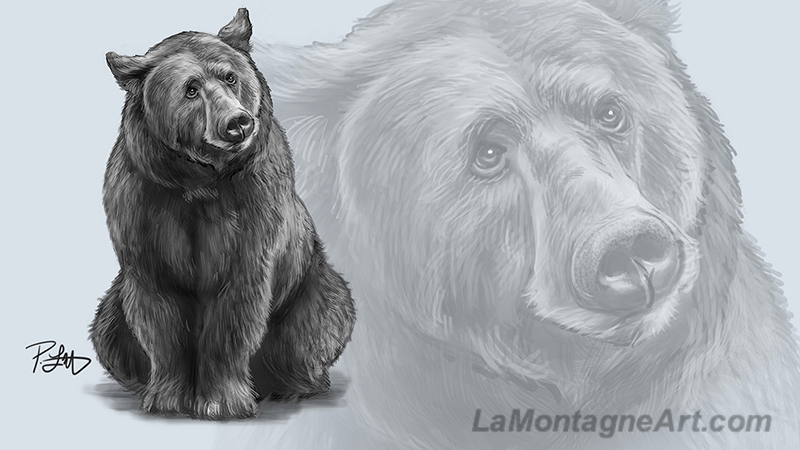 I enjoy creating my animal art, but lately, whenever I go to paint something, I think, “Will this animal be popular? Have I painted too many of these? Not enough? Will this make me any money?”
I enjoy creating my animal art, but lately, whenever I go to paint something, I think, “Will this animal be popular? Have I painted too many of these? Not enough? Will this make me any money?”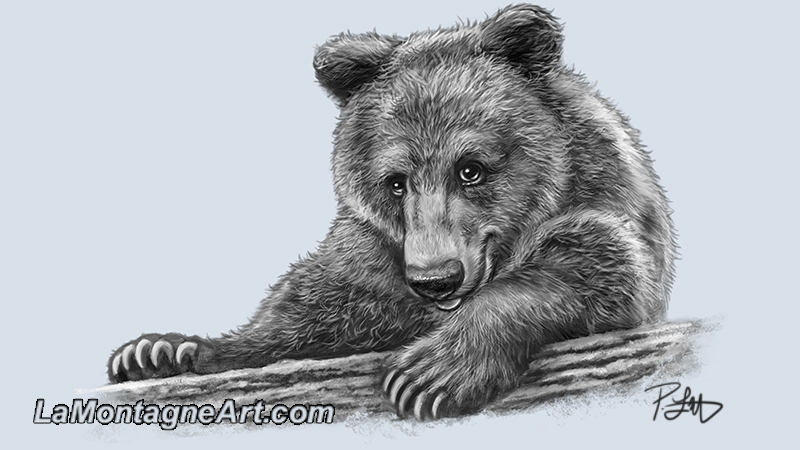 So while I’m trying to answer the question of what I want to do, I’m working on my art book about bears. Not promising to work on it like I’ve been doing for more than six years, but working on it, as I’m well and truly sick and tired of my own procrastination and bullshit excuses.
So while I’m trying to answer the question of what I want to do, I’m working on my art book about bears. Not promising to work on it like I’ve been doing for more than six years, but working on it, as I’m well and truly sick and tired of my own procrastination and bullshit excuses.
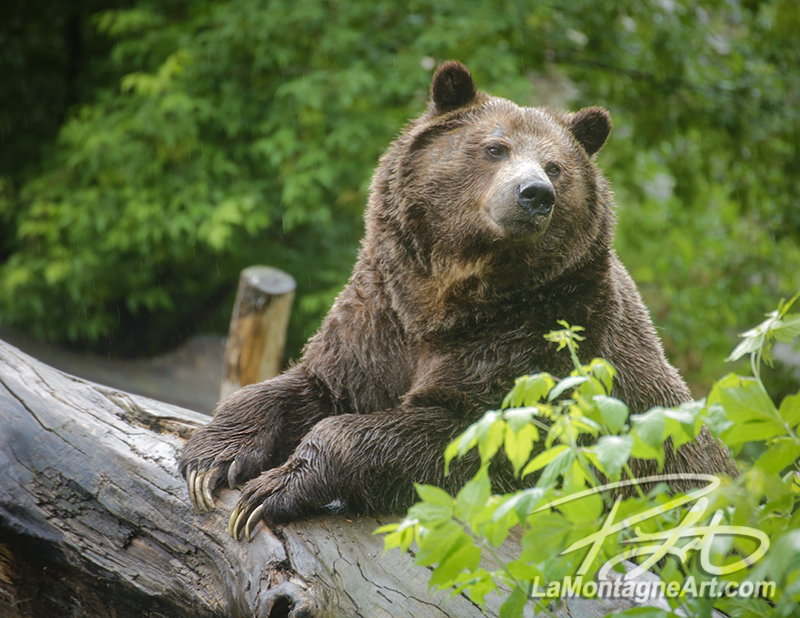 On Wednesday, I delivered a large print order to the Calgary Zoo. A zookeeper friend had ordered a couple of canvases, so I was also happy to deliver those to her.
On Wednesday, I delivered a large print order to the Calgary Zoo. A zookeeper friend had ordered a couple of canvases, so I was also happy to deliver those to her.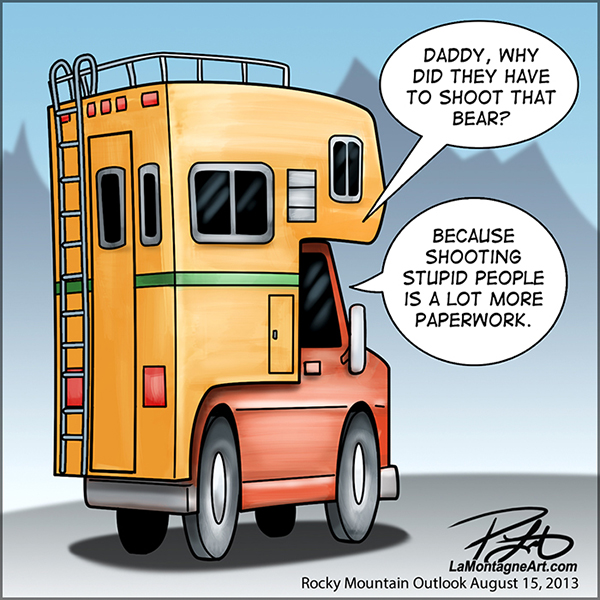 People leave food out while camping which attracts wildlife. When a bear associates people with food, it’s game over for the bear. I’ve lived in this valley for almost thirty years, and I don’t want to count how many times I’ve read about bears who’ve been euthanized because of selfish and careless people.
People leave food out while camping which attracts wildlife. When a bear associates people with food, it’s game over for the bear. I’ve lived in this valley for almost thirty years, and I don’t want to count how many times I’ve read about bears who’ve been euthanized because of selfish and careless people.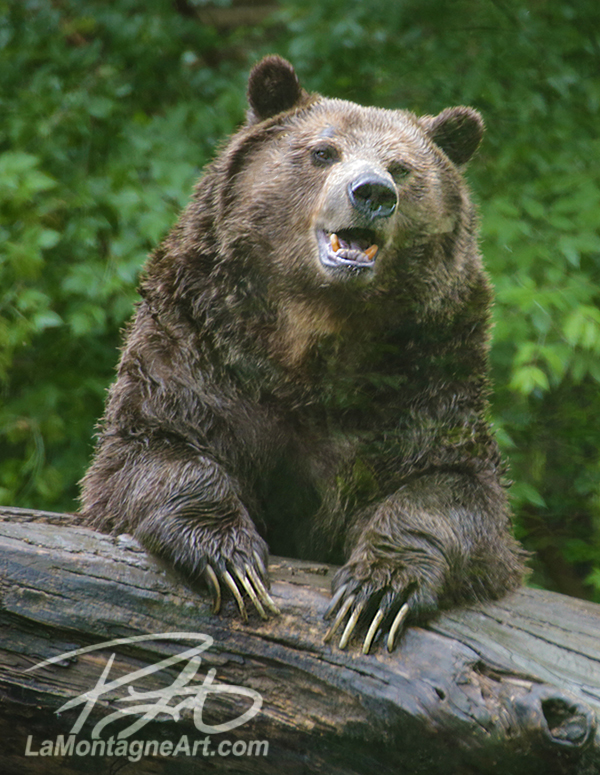 The more people repeat Skoki’s story, the more they educate young people to want to protect them in the wild and prevent them from being put in a zoo or destroyed.
The more people repeat Skoki’s story, the more they educate young people to want to protect them in the wild and prevent them from being put in a zoo or destroyed.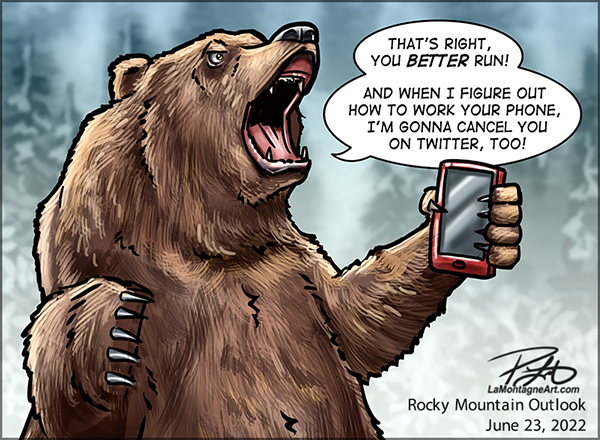 I must have taken about 700+ shots of Skoki on Wednesday. He gave me so many beautiful poses. At one point, he walked across a log, sat up and straddled it, then hung out there. The wind came up, and he was sniffing the air, clearly enjoying the rain, and I ended up with many great references. Look at those little feet.
I must have taken about 700+ shots of Skoki on Wednesday. He gave me so many beautiful poses. At one point, he walked across a log, sat up and straddled it, then hung out there. The wind came up, and he was sniffing the air, clearly enjoying the rain, and I ended up with many great references. Look at those little feet.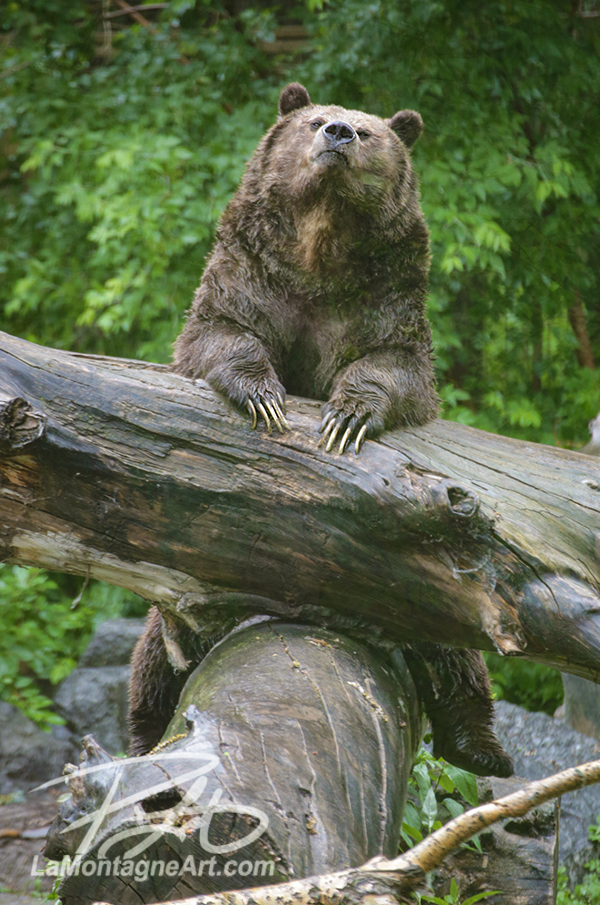 He gave me a great idea for a painting. I imagine several bears lined up at a log, like a bunch of friends hanging out at a bar. With his multiple poses and expressions in the same spot, I can paint five or six different bears using him as the reference. I’ll paint the faces and bodies differently for variety, making one thinner, another heavier, taller, and shorter; there are plenty of options. By varying the colours, the finished bears will look like their own characters, but the primary reference will still be one bear.
He gave me a great idea for a painting. I imagine several bears lined up at a log, like a bunch of friends hanging out at a bar. With his multiple poses and expressions in the same spot, I can paint five or six different bears using him as the reference. I’ll paint the faces and bodies differently for variety, making one thinner, another heavier, taller, and shorter; there are plenty of options. By varying the colours, the finished bears will look like their own characters, but the primary reference will still be one bear.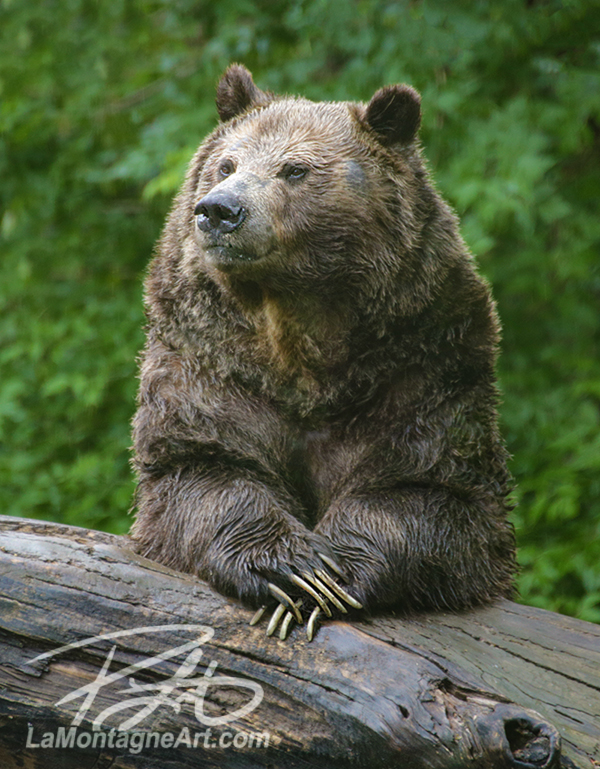 Resuming my walk back to my car about an hour and a half later, it struck me funny that I began the day hoping to get photos of animals I hadn’t yet painted or only painted once but left the zoo with a camera card full of grizzly bear photos. I have more pictures of bears than any other animal.
Resuming my walk back to my car about an hour and a half later, it struck me funny that I began the day hoping to get photos of animals I hadn’t yet painted or only painted once but left the zoo with a camera card full of grizzly bear photos. I have more pictures of bears than any other animal.
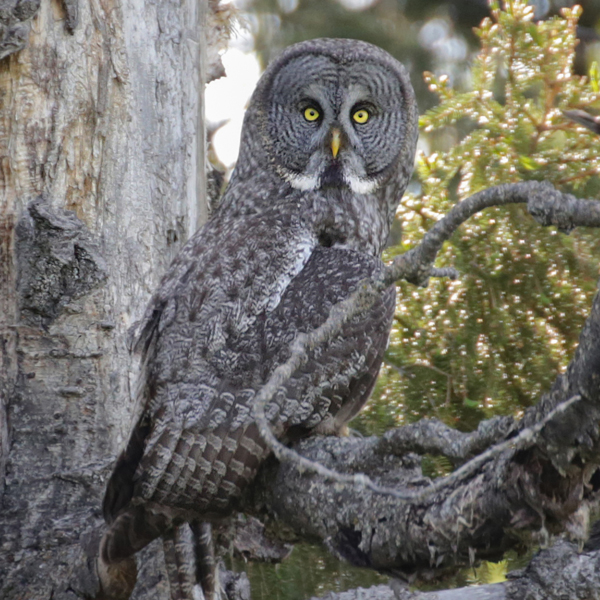
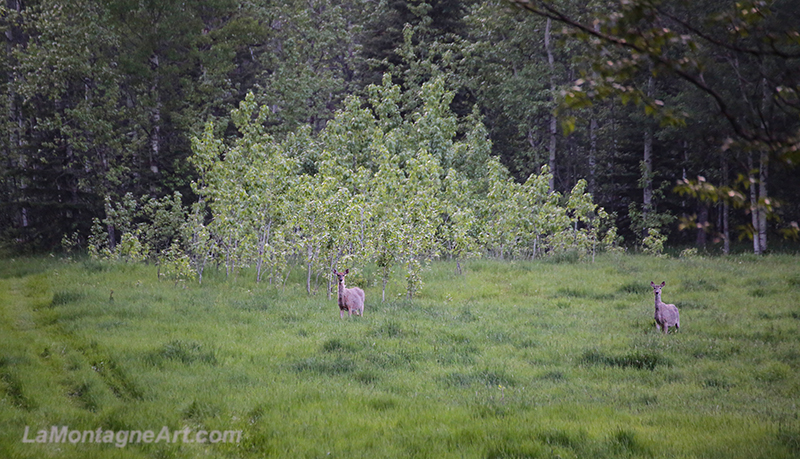 It’s a half section of land with lush green forest, pastures, a creek and lots of room to wander. There are plenty of birds, deer and coyotes. Every once in a while, you might spot a moose, beaver or a bear, and on one trip last fall, my buddy Darrel woke to a cougar walking right beside the deck.
It’s a half section of land with lush green forest, pastures, a creek and lots of room to wander. There are plenty of birds, deer and coyotes. Every once in a while, you might spot a moose, beaver or a bear, and on one trip last fall, my buddy Darrel woke to a cougar walking right beside the deck.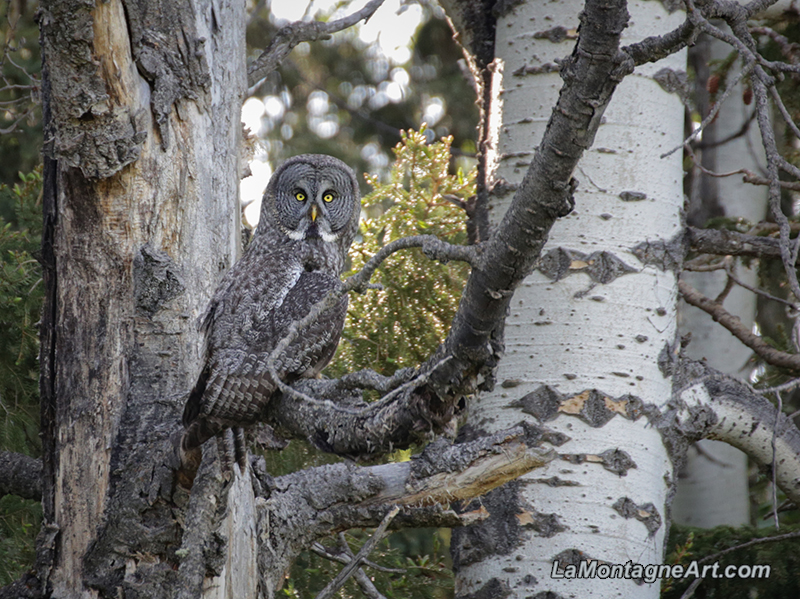 This past Saturday, however, I was delighted to see another great grey owl. This one wasn’t as enthused by my intrusion, but I still got some shots before it flew off into the trees. It wasn’t until I returned to the cabin and loaded the card onto my iPad that I realized the shots were much better than I had thought. Since they were all handheld at 300mm, I was surprised I got any that were even in focus, or close to focus, anyway.
This past Saturday, however, I was delighted to see another great grey owl. This one wasn’t as enthused by my intrusion, but I still got some shots before it flew off into the trees. It wasn’t until I returned to the cabin and loaded the card onto my iPad that I realized the shots were much better than I had thought. Since they were all handheld at 300mm, I was surprised I got any that were even in focus, or close to focus, anyway.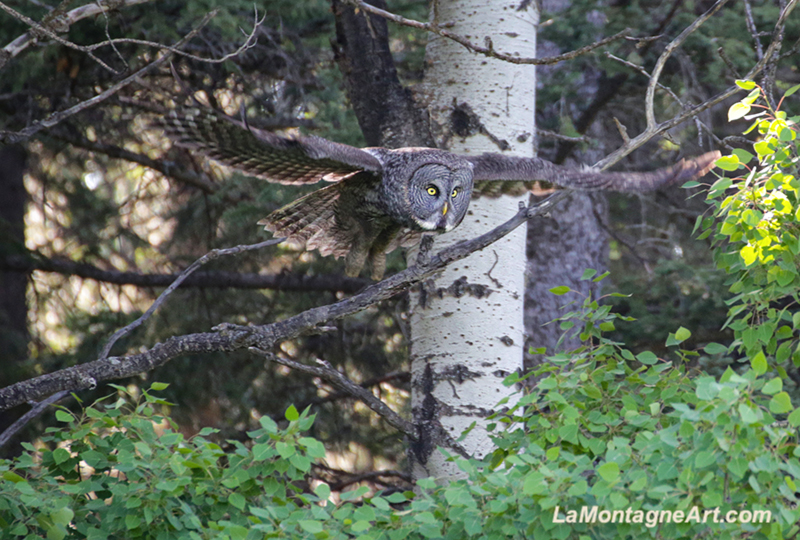 The great thing about taking photos for painting reference is that if they’re a little out of focus or the lighting isn’t ideal, I’ll still keep plenty of shots a professional photographer would throw away. What’s not worth printing to them, could be a perfect reference shot for me.
The great thing about taking photos for painting reference is that if they’re a little out of focus or the lighting isn’t ideal, I’ll still keep plenty of shots a professional photographer would throw away. What’s not worth printing to them, could be a perfect reference shot for me.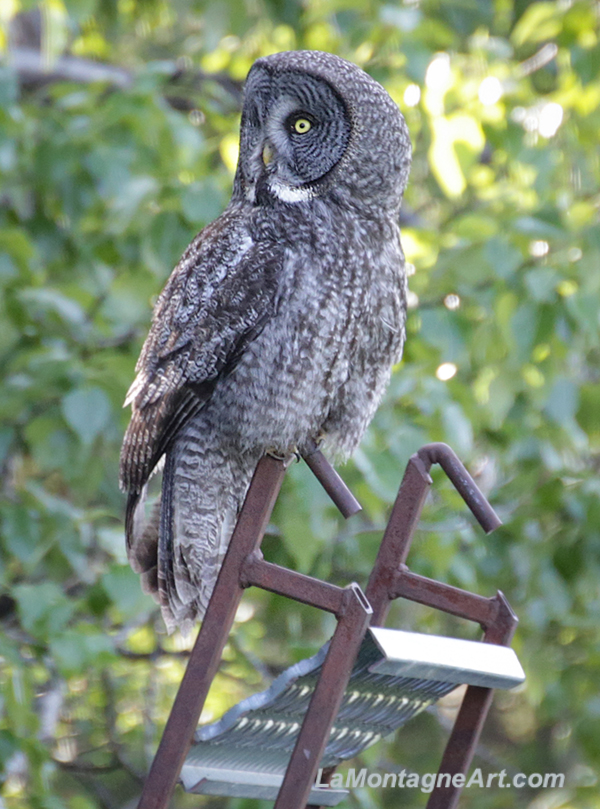 The couple we rent from have become friends over the last five years, so they’ll often join us for a couple of drinks in the evenings. I mentioned that it bothers me that I’m nervous around horses. I want to be more comfortable with them, as I know they’re able to sense it when a person is uneasy.
The couple we rent from have become friends over the last five years, so they’ll often join us for a couple of drinks in the evenings. I mentioned that it bothers me that I’m nervous around horses. I want to be more comfortable with them, as I know they’re able to sense it when a person is uneasy.